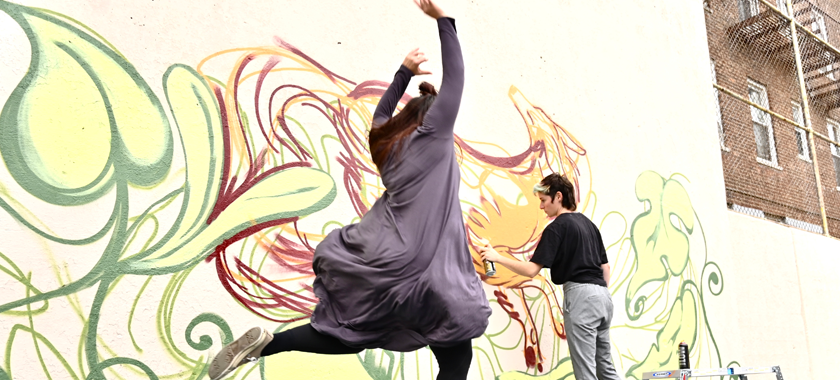
How to Launch and Run a Successful Crowdfunding Campaign
Fundraising Consultant and Artist Iquo B. Essien Shares How She Raised $35,000 for Her Creative Business in 8 Weeks (And How You Can, Too)
You’re thinking of developing a crowdfunding campaign to help realize your creative project or business. But where to start, and how can you encourage the critical momentum that you need for it to succeed?
Here, fundraising consultant and artist Iquo B. Essien shares how she raised $35,000 in 8 weeks through crowdfunding to support her work. She’ll also provide tips for how to launch a successful fundraiser in 8 weeks with a proven methodology.
What Crowdfunding Is, and What It Can Accomplish
Crowdfunding is funding a project or venture by raising small amounts of money from a large number of people, typically by the internet or some other digital platform. In exchange for money, funders can get rewards (get something for giving) or equity (shares or profits of your for-profit business). Essien emphasizes that you can do a crowdfunding campaign in any stage of your business or project’s development.
“Imagine if, instead of bootstrapping your project or business on a few dollars and elbow grease, that you could launch a fully-funded dream. You could launch or grow the project or business you’ve been sitting on for years, all while marketing your work to a wider audience and growing your email list and social media followers. Well, in case you’re wondering, a fundraiser can do all of those things,” says Essien.
Essien’s Campaign
Essien had been writing a family history memoir, and in early 2020 she traveled to Nigeria to visit her late grandmother’s house. She imagined the house being transformed into a memoir gallery where she could display photos, video, and audio recordings of her interviews with friends and family she’d conducted over the years.
Essien knew she was going to launch a fundraiser to support the project, but fundraising came into the picture sooner when she learned that her grandmother’s house, which had been in her family for 100 years, was going to be sold.
“I thought to myself, I want to buy this property so that it can stay in the family, but also so that I can develop this project,” said Essien. “I convinced the person who had put it on sale that I was going to buy it. But I had no money,” she continued. Unfortunately, this timing coincided with the start of the pandemic, which led to Essien being let go from her consulting job, going on unemployment, and investing her savings into her business.
In March 2021, she put a crowdfunding page together in five days to raise the $30,000 needed to purchase the property. She ended up raising $35,000 in 8 weeks.
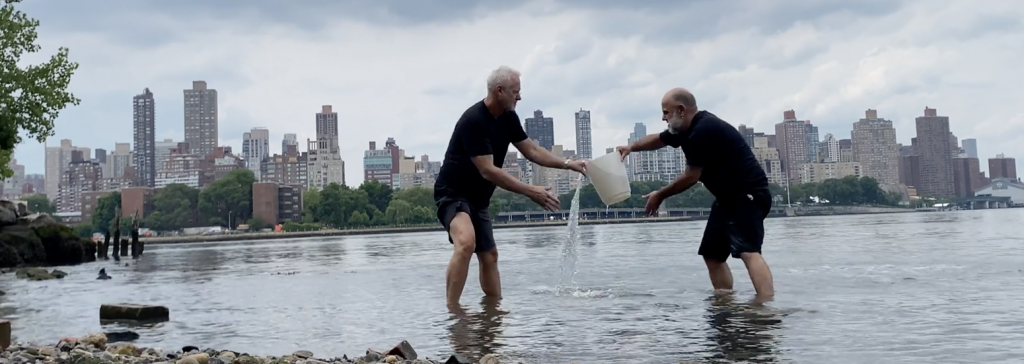
Start with a Well-Crafted Story
Essien started with the basics of what she knew from her work as a communications and marketing professional: “If you craft a compelling story and package it up oftentimes with a pitch, video, or campaign page, and share it with an audience with a call to action to give, you turn a crowd into an engine that is funding your dream.”
Your success depends on your ability to tell your story and convince people that they should care. “I call it your ‘hero story,’ which is something I got from film school,” said Essien. “Think of it as any type of archetypal storytelling where you think of yourself as a hero, somebody who is going to embark on a transformation that’s going to change the world. The crowd is swooping in to help you across the finish line on that journey. Really, you’re trying to present a story that is evocative and inspires people to give,” she continued.
Essien wrote her campaign copy, then hired a direct response fundraising copywriter to help fine tune it. If you don’t have the resources to do that, share it with people in your network that you trust. “You have to be really, really clear with people about why the work you’re doing matters, and what the potential impact could be,” she emphasized. She also encourages you to write for the ordinary person by using “easy, conversational, accessible language that’s really evocative.”
The images, video, and supplemental materials that you share will help to reinforce your storytelling. For Essien, that included sharing schematics on what the house would look like as a gallery space, photos from the project that she’d taken over the years, and a budget for her plans.
Hiring Outside Help
As mentioned above, Essien hired a direct response fundraising copywriter to help her refine her campaign. She also budgeted for a designer, knowing that they could realize a more sophisticated look and feel for her campaign.
While it is not necessary to do, you may want to consider where you may need help. For Essien, she budgeted for these expenses and added them into her crowdfunding campaign goal.
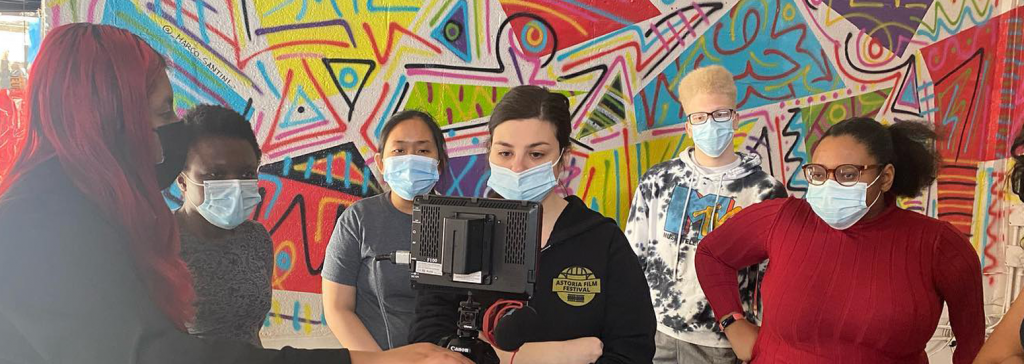
Designing and Running Your Campaign
Day 1. Choose Your Platform + Connect Payment Methods + Copywriting
First, choose your platform. Essien, who planned to launch the campaign on International Women’s Day,* selected IFundWomen, a crowdfunding industry leader for female founders and creators. There are other platforms out there, including Seed&Spark (NYFA Fiscal Sponsorship’s crowdfunding partner), Kickstarter, Indiegogo, and GoFundMe. We suggest doing your due diligence to choose the right platform for you and your project or business.
Once you’ve found your platform, you’ll want to write the story of what you’re raising money for. At this stage, Essien encourages you to consider what your rewards are going to be, how your biography will read, and how you describe the project so that people both care about the work you’re looking to do and have the confidence that you have what it takes to see it through.
*Essien timing her campaign to coincide with International Women’s Day is an example of how a person can think about related public events/holidays that connect to their campaign when they design and launch it.
Day 2. Create Your Visual Identity
Visual identity is another key component to your crowdfunding campaign. This includes everything from selecting a color palette and creating a logo and other design elements that visually reinforce the story that you’re trying to tell, with a polish that further underscores that people can rely on you to deliver on your project.
Essien hired a graphic designer because she knew she needed to act quickly on the design front and get professional assistance.
Day 3. Photos + Promo Video
Essien focused on photos and a promo video on Day 3, selecting images on her computer that she had taken in Nigeria to highlight on her campaign page. She also cut together a video of herself in Nigeria and in her Brooklyn apartment, talking through what she wanted to use the money for and how it would help her develop her project. She worked off of a script she had written, to ensure she was hitting key points in her appeal.
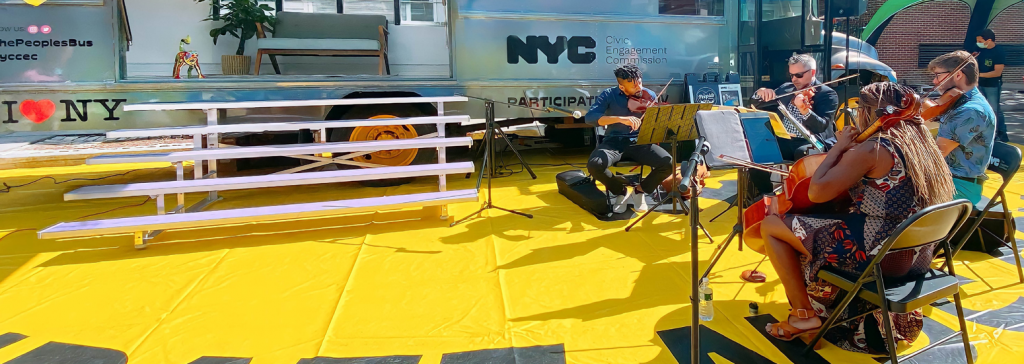
Day 4. Set Up Campaign Page + Choose Rewards
By Day 4, Essien was ready to put the campaign page together. “If you’ve ever put a blog together, and you’ve seen a content editor–most of these crowdfunding campaign pages are just a simple content editor. All you have to do is put the pieces where they go,” says Essien. In other words, most major platforms make it fairly easy to design your own page.
Part of the set-up, in addition to uploading video, photos, and text, includes choosing rewards, which are incentives for people to donate. Among the items Essien developed were tote bags and tee-shirts, as well as courses where people could learn how to fundraise for their own projects (“Fund my dream, I’ll fund yours”).
Day 5. Website + Social Media + Outreach
In addition to creating her crowdfunding page, Essien ensured that her personal website was updated to reflect her campaign. She posted on social media and “conducted some quick and dirty outreach to friends and family” through text messages, emails, and phone calls, to let them know about her campaign and imminent launch.
In terms of who to reach out to, Essien suggests thinking about your immediate circle, friends and family as well as your project audience who is already interested in what you’re doing.
Day 6. Launch + Raise Money!
Keep in mind that some platforms will review your campaign before it is officially live and published. With IFundWomen, for example, they reviewed and approved Essien’s campaign and published it the day after International Women’s Day. Once your page is live, then consider yourself in full campaign mode.
Says Essien: “After your campaign is live, it’s all about campaigning. Campaigning has a whole set of activities that are pretty consistent that are designed to drive and keep interest high over time.”
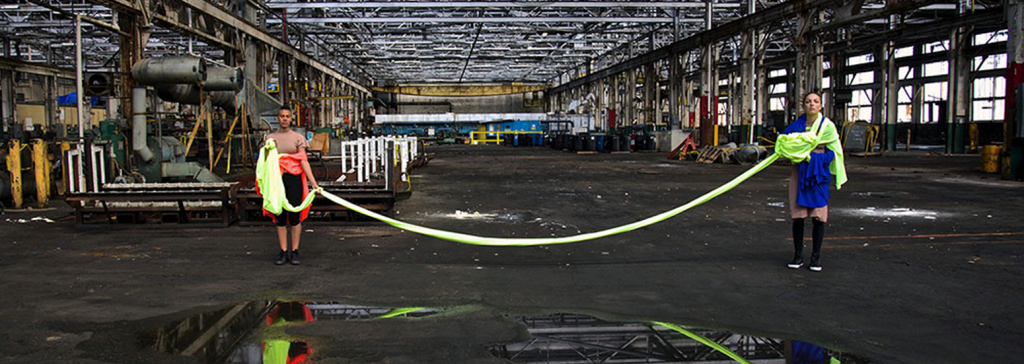
The Campaign Life Cycle
“For any campaign there’s extremely high interest at the beginning. It’s sort of like the peak. And then, as you get towards the middle of the campaign we fall into a valley. People kind of forget that you’re raising money and there isn’t a lot of energy and excitement until you get closer to your deadline. So campaigning is a whole set of activities that you’re doing to keep the energy high and your campaign in peoples’ consciousness so that they give.”
For Essien, this included several matching fund opportunities that helped to keep momentum going. She also suggests getting someone to volunteer tickets (to a Broadway show, for example) that will go to the person who gives the most money. “There are different activities, contests, and things that you can do to keep energy high during a campaign. And those are the kinds of activities that it takes to raise $35,000 in 8 weeks.”
Essien suggests posting daily updates and shout outs to people who have donated.
In Conclusion
Essien underscores that a fundraiser is not a transactional exercise. “It’s an opportunity to build community around your work, and it’s when people have a personal take in your success or failure that they send you money. The goal is really not the money. The goal is to build community, and that sense of camaraderie. People really want to see you succeed. The crowd wants to carry you the hero over the finish line to make that transformational impact on the world.”
Interested in Essien’s “Crowdfund Your Dream” course and coaching program? Essien is offering NYFA readers 33% off Basic Membership (works on monthly OR 6-month package) with the code ‘NYFAfriends’ through Friday, June 30, 11:59 PM ET. Click here for details and to register.
About Iquo B. Essien
With a B.S. degree in biology from Stanford University, Essien began her career at a communications firm helping influential global health clients like the Centers for Disease Control and Prevention (CDC) and National Institutes of Health (NIH) raise public awareness of critical issues such as HIV/AIDS, malaria, and child mortality.
Driven to combine her passion for social change and the arts, she earned her MFA degree in film from NYU’s Tisch School of the Arts where she launched her first fundraising campaign that raised $15,000 in four weeks for her short film, AISSA’S STORY.
The experience unlocked a passion to help people raise money and, since then, she has served a range of artist, nonprofit, and corporate clients. Essien created Crowdfund Your Dream, an online course and fundraising consultancy, to help women and BIPOC founders raise up to $500,000 to fund their businesses, leaning in to their culture factor and the communities they serve.
Essien formerly served as Communications & Marketing Manager of Hook Arts Media, Communications and Marketing Director of Culture Project, Content & Marketing Director of Opportunity Lab, and Strategy Consultant for Public Equity Group. Her films have screened in 14 countries around the globe and her production company, Editi Films, is fiscally sponsored by Fractured Atlas. She was a 2019 NYSCA/NYFA Artist Fellow Finalist in Screenwriting.
–Compiled by Amy Aronoff, Senior Communications Officer
You can find more articles on arts career topics by visiting the Business of Art section of NYFA’s website. Sign up for NYFA News and receive artist resources and upcoming events straight to your inbox.
Essien’s expertise comes to NYFA courtesy of NYFA Fiscal Sponsorship. NYFA Fiscal Sponsorship’s quarterly no-fee application deadlines are March 31, June 30, September 30, and December 31. We also accept Out-of-Cycle Review applications year-round. Reach out to us at [email protected] for more information.